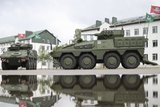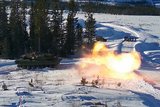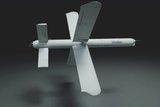South Korea to develop long-range interceptor for Iron Dome by 2028
Plans for the Iron Dome were approved in June 2021 to protect against North Korean long-range artillery. (Photo: DAPA)
The Defense Acquisition Program Administration (DAPA) has announced it held a meeting on 20 January with the Agency for Defense Development and prototype companies LIG Nexone, Hanwha Aerospace, and Hanwha Systems, to develop a long-range artillery interceptor system for its Iron Dome.
The Agency for Defense Development reportedly plans to spend around KRW479.8 billion (US$329 million) through to 2028 to develop the interceptor system.
The low-altitude missile defence (LAMD) system is seen as important by South Korea to protect places of national and military importance from the threat of North Korean missiles. The country’s development of its own Iron Dome, DAPA stated, would be designed with “superior capabilities to engage more targets at the same time” than the Israeli Iron Dome.
Bang Uk-chul, head of the guided weapons division of the Defense Acquisition Program Administration (DAPA), said: “The commencement of the development of the long-range artillery interception system means that we will directly secure a reliable air defence capability that protects the lives of the people and important facilities of the state and military from the threat of a large number of North Korean long-range artillery guns.”
South Korea’s intent to develop an Iron Dome was first revealed in 2021 when it announced the development of a KRW2.89 trillion (US$2.6 billion) indigenous air defence system.
In January 2025, DAPA said that it had gained approval to push forward the deployment schedule for the country’s LAMD system by two years, with a new timeframe of between 2025 and 2028.
More from Land Warfare
-
Germany signs multi-billion-dollar deals for 6x6 CAVS and GDELS Eagle vehicles
The order is a further boost for the Common Armoured Vehicles System programme which has notched notable successes in the past 12 months. The first vehicle, made in Finland, will be delivered next year with local production expected to ramp up in 2027.
-
![Rheinmetall and KNDS tank tie-up narrows trans-European options]()
Rheinmetall and KNDS tank tie-up narrows trans-European options
The French and German governments signed an agreement in June 2018 to cooperate on the development of a new main battle tank under the Main Ground Combat System programme but the effort has struggled. This new agreement may damage it further.
-
![2025 land market review: British Army woes, European heavy armour and US MBT progress]()
2025 land market review: British Army woes, European heavy armour and US MBT progress
The last year has seen several major procurements in the land market. Shephard’s Dr Peter Magill reviews the main trends and themes in land procurement of 2025.
-
![Hungary set to begin using Hero 400 loitering munitions]()
Hungary set to begin using Hero 400 loitering munitions
Developed by Israel's Uvision and with systems being sold in the thousands to multiple European NATO countries and the US, the Hero family of loitering systems is also in production in the US and Italy, the latter through Rheinmetall.
-
![Croatia orders Leopards and CAESAR howitzers as Lithuania orders more CAESARs]()
Croatia orders Leopards and CAESAR howitzers as Lithuania orders more CAESARs
The Leopard is becoming the tank of choice in central and eastern Europe as Croatia joins Lithuania, the Czech Republic and Hungary in ordering the platform. Lithuania and Croatia have also signed for CAESAR howitzers.
-
![Light Reconnaissance Strike – enabling a vital mission set (Studio)]()
Light Reconnaissance Strike – enabling a vital mission set (Studio)
A new system-of-systems concept will unlock digital integration of sensors and weapons for Light Forces, allowing them to shape the battlefield environment on their own terms and upgrade legacy platforms.

























